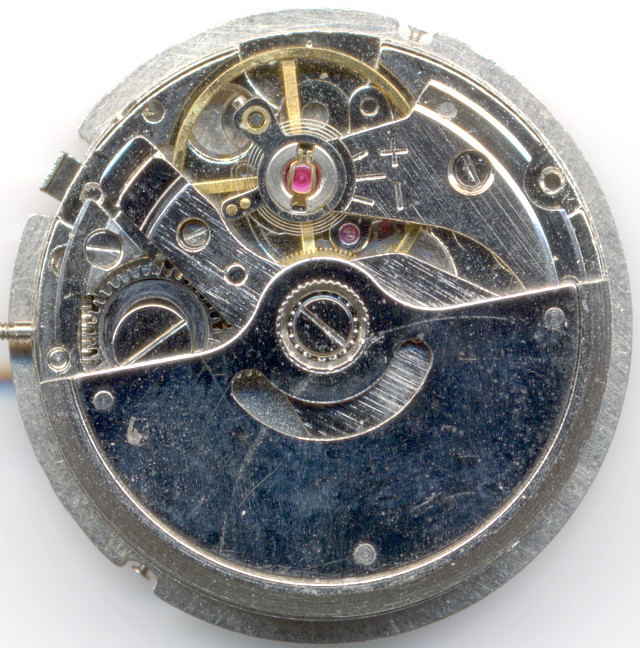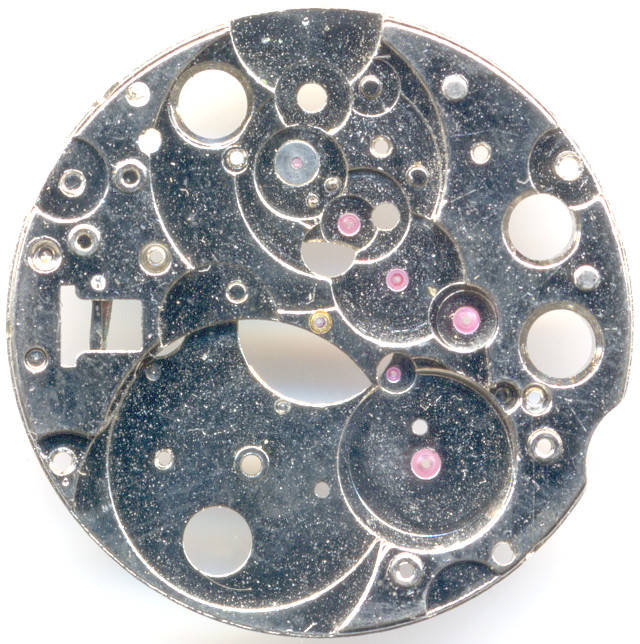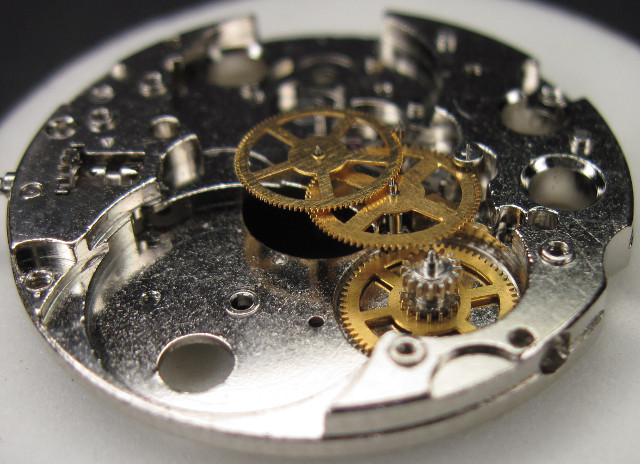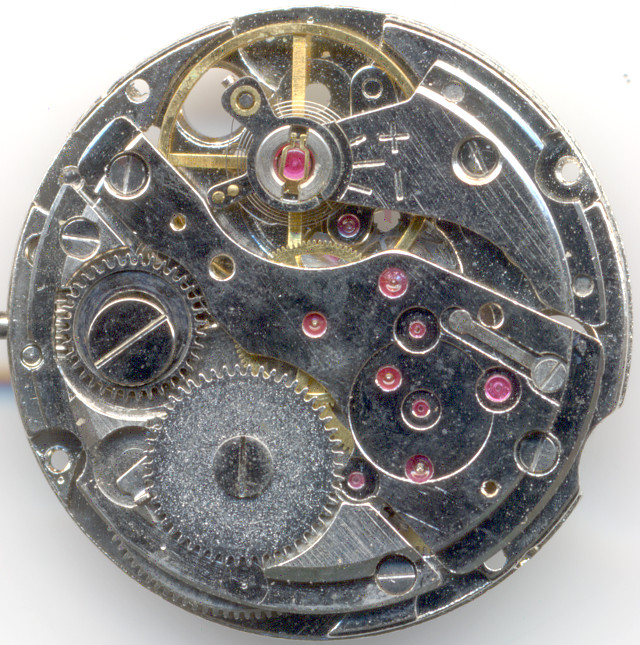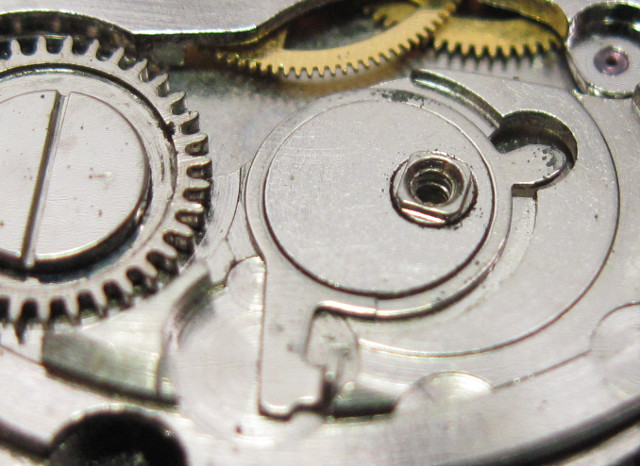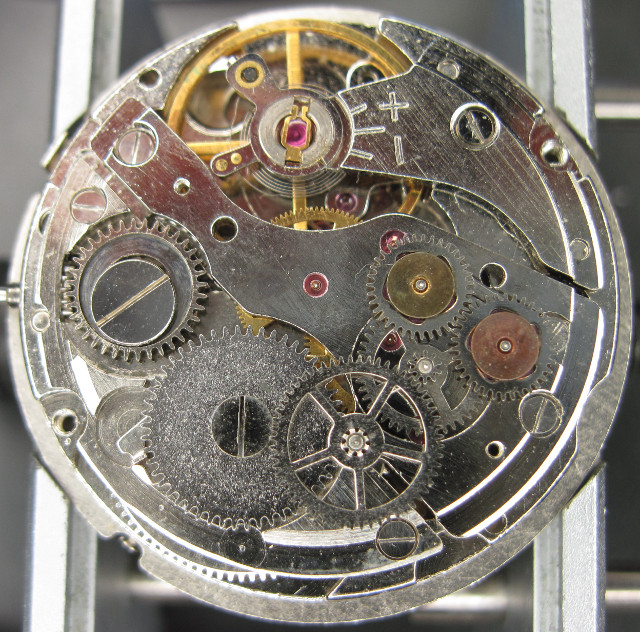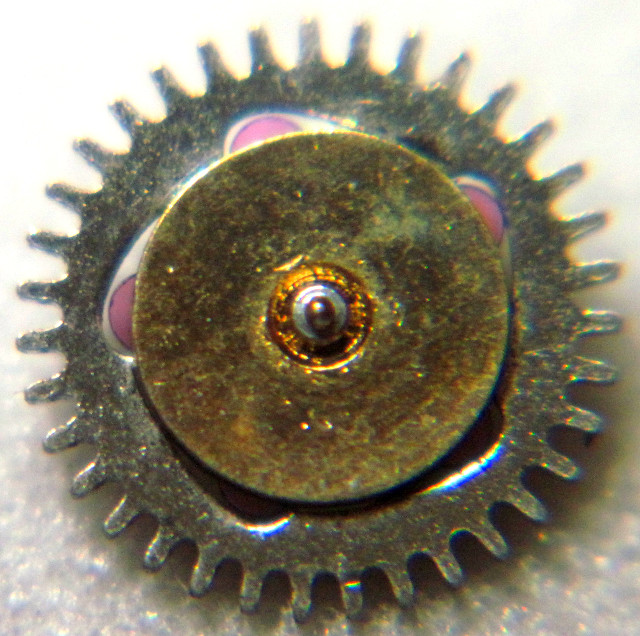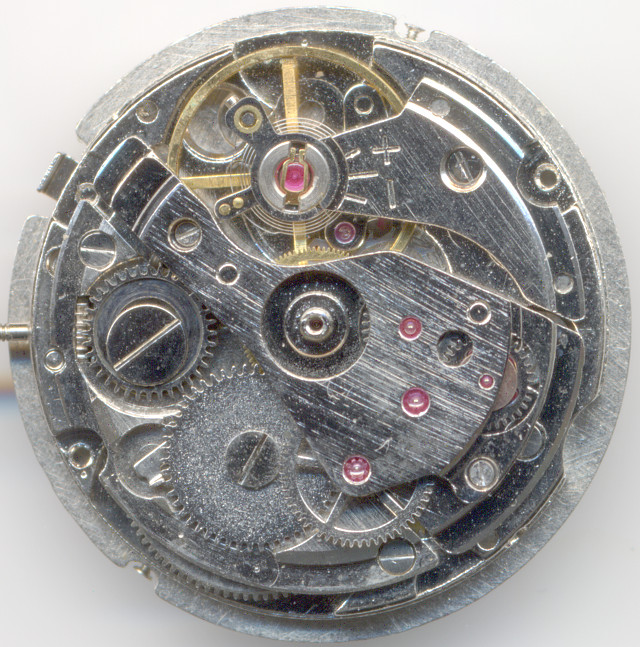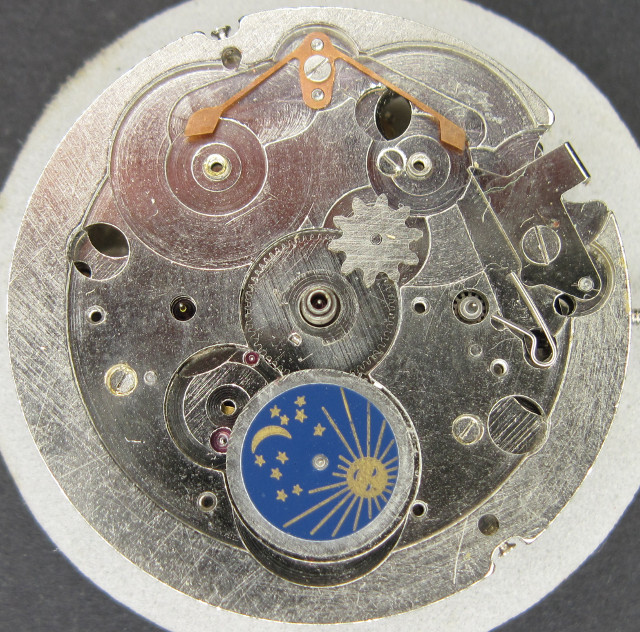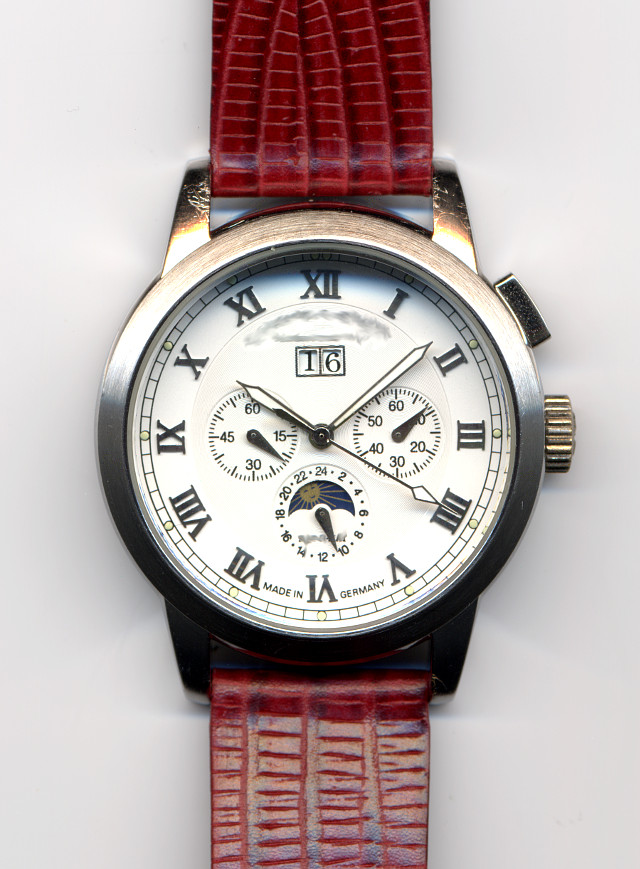Description
In the 1990ies, chinese movements flooded the market, often used in watches, which promised more, than they finally offered. From this time, the chinese R16-1 origins, which has got an interesting selfwinding mechanism, a large date indication (from 00 to 39) and several useless indicators like a day/night disc (not to mix up with a moon phase indicator) and three subdials with a 24h pointer, a minute pointer and an additional seconds indication (supplementary and synchronious to the center second indication).
The undecorated base plate shows the basic gear train with indirectly driven hands. It’s common for chinese movements, that all important bearings carry rubies.
The basic gear train and the base plate base on the Shanghai SB1.
As on many modern movements, the R16-1 has got a second wheel with a slip cluth, since the hands are driven on the dial side. This construction allows the abandonment of a directly driven center minute wheel and so the balance and mainspring barrel have more space.
The four leg anular balance, which is beared in two chinese-type shock protections, beats rather slowly with 21600 A/h.
The first oddity of this movement is, that it has got a decentral seconds indication at 9 o’clock. For this, the third wheel drives a spring loaded wheel, which has got the same number of teeth, as the wheel for the center second. This indication is useless, but it fills one sub dial.
The upper side of the gear bridge is lavishly equipped with jewels, due to the fact, that it also carries all downside bearings of the selfwinding mechanism.
Since the R16-1 doesn’t use a breguet cluth for the winding stem, it has to be decoupled differently. This happens with a slipping beared crown wheel. An interesting solution, but it doesn’t work very well, when you try to wind the movement upside down, since then, the gravity keeps the crown wheel decoupled.
The click sping, which consists of only one part below the ratchet wheel, is a really economic function and has the big advantage, that no further “flying” springs are used.
The gear train of the selfwinding mechanism consists of two ratchet wheels with a Gyrotron (Girard Perregaux) like lock mechanism and two reduction wheels.
The two ratchet wheels are responsible, that the oscillating weight winds in both directions and decouples on manual wind. They consist of a wheel, into which five flat ruby plates are put into, which interfere with the axle. In one direction, they slip,, in the other direction, they build enough friction to transmit the power between axle and wheel.
It is noticeable, that the R16-1 puts so much effort in the selfwinding mechanism and even has got a ball beared oscillating weight. Too bad, that the execution of the ball bearing is pretty poor, when you tighten the center screw, the case of the ball bearing bends and blocks the mechanism.
The oscillating weight has got a riveted heavy metal rim.
The true speciality of the 16-1 is on the dial side with its complications. Without them, it looks pretty clean and its diameter is smaller, than later with the mounted calendar mechanism.
At 3 o’clock, you can already see the 60 minutes indication, which is really usless, but drives another wheel on the dial. Its number of teeth is equivalent to the number of teeth of the cannon pinion. It is driven by the changer wheel and is also part of the yoke hands setting gear train. A pretty clever solution.
The large date indication is a module with larger diameter and mounted on the dial. There are holes for the two hands of the sub dials at 3 and 9 o’clock. At 5:30, you see the driving wheel for the 24hr indication at 6 o’clock. This driving wheel is driven by the hour wheel.
The 24-hour disc has a drive on which the 24-hour hand is placed. The switching wheel is located centrally with a movable cam, which is moved via a switching pin. This cam engages the starwheel at 1 o’clock and switches the date slowly. This construction is unfortunately unstable. When using the manual date advancement (lever at 1 o’clock), the date mechanism can be adjusted so that it switches the date at noon (24 o’clock pointer to high noon, not at midnight). The reason is that the switching cam is not vertically connected to the gear wheel and slips due to its height play. In addition, the starwheel is also stored very unstably, so that it can block the switching, no matter whether it is manually or by switching cam.
Another not very reliable mechanism is the deceleration of the grand date: Here, a small switching finger engages on the outer edge of the single disc in the incised tens wheel:
This engagement only works, when both discs are exactly on the same height and without any shake - and this only happens in theory, especially the single digit disc has got a large high play and so, the advancment of the ten-digit disc often doesn’t work.
The R16-1 shows drastically, why chinese movements have got a bad reputation: They promise a lot (often with useless features), but their poor construction and execution proofs the opposite. Especially the large date indication mechanism is useless due to its bad execution.
In the lab
The specimen shown here was worn for a certain time (can be seen on the fully tarnished crown), but had to be cleaned due to bad rates and contamimation with metal scrapings. Nevertheless, the rates stay poor and the date indication mechanism rarely works.
After a light shock, the movement completely lost its time-consuming regulation. Because of the fragile regulation mechanism, another new regulation was not made.
Technical data
| Manufacturer: | China |
| Caliber: | R16-1 |
| Size: | 12 1/2''' (measured: 27,9mm) |
| A/h: | 21600 |
| Number of jewels: | 36 |
| Escapement: | Pallet lever |
| Balance types: | Nickel screw balance |
| Shock protection(s): | China (different types) |
| Balance bearing / direction hairspring: | Counterclockwise |
| Moveable stud: | yes |
| Adjust mechanism: | Hairspring key |
| Construction: |
|
| Construction type: | solid construction |
| Winding mechanism: | yoke winding system |
| Setting lever spring: | 2 holes |
| Features: |
|
| Inventory number: | 16009 |
